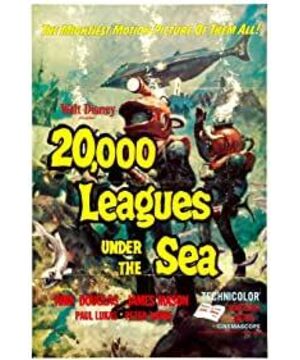The famous original works have various children's picture books in the early period in China, and the themes are more in line with socialist values. From the elementary school years, you can see various translated novels. This kind of public foundation makes the audience of this literary adaptation film look at the film in a more demanding light. Even people who haven't read the original novel have probably heard the adventure story of "Sailor vs. Octopus". For this reason, it seems to have triggered a discussion about the existence of the giant squid. Undoubtedly, the novel is a masterpiece of science fiction. In Jules Verne’s era, the submarine, scuba diving, nuclear power (visually) and other works such as tanks, helicopters, etc., have all become today Reality. What is rare is that the design details of the Nautilus submarine in the movie can withstand scrutiny, both in terms of dramatic effects and practical considerations. The design of the cabin, shutter-type viewing windows, engine shafts, dry diving suits, and even parking lifeboats All berths have been carefully considered (the split berth is really a surprise). Both novels and movies are full of pessimistic idealism (fabricated) temperament. The music played by Captain Nemo’s pipe organ immediately has the sense of sight of a vampire castle, using music to set off the captain’s hatred and the creativity of breaking with humans. It's really clever. The utopian conception of the Nautilus suddenly reminded me of another movie-"The Beach."
With a few thousand words of comment, this is all that remains. . zz
View more about 20,000 Leagues Under the Sea reviews











